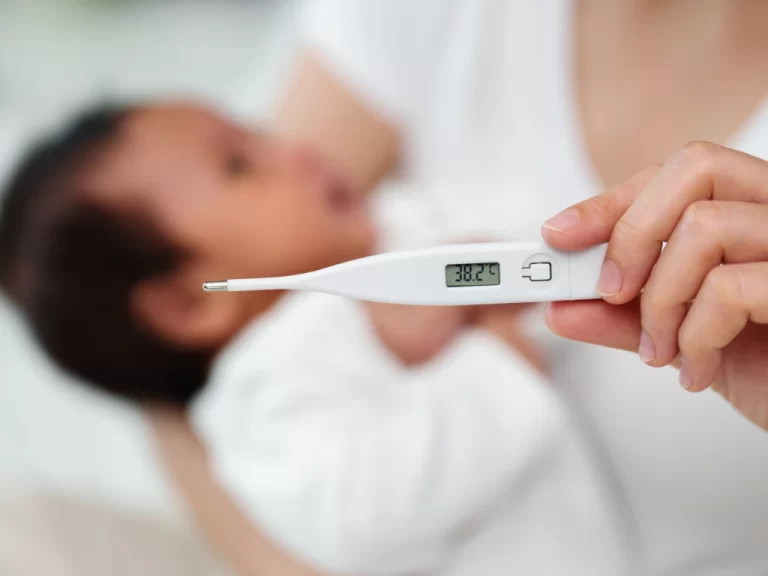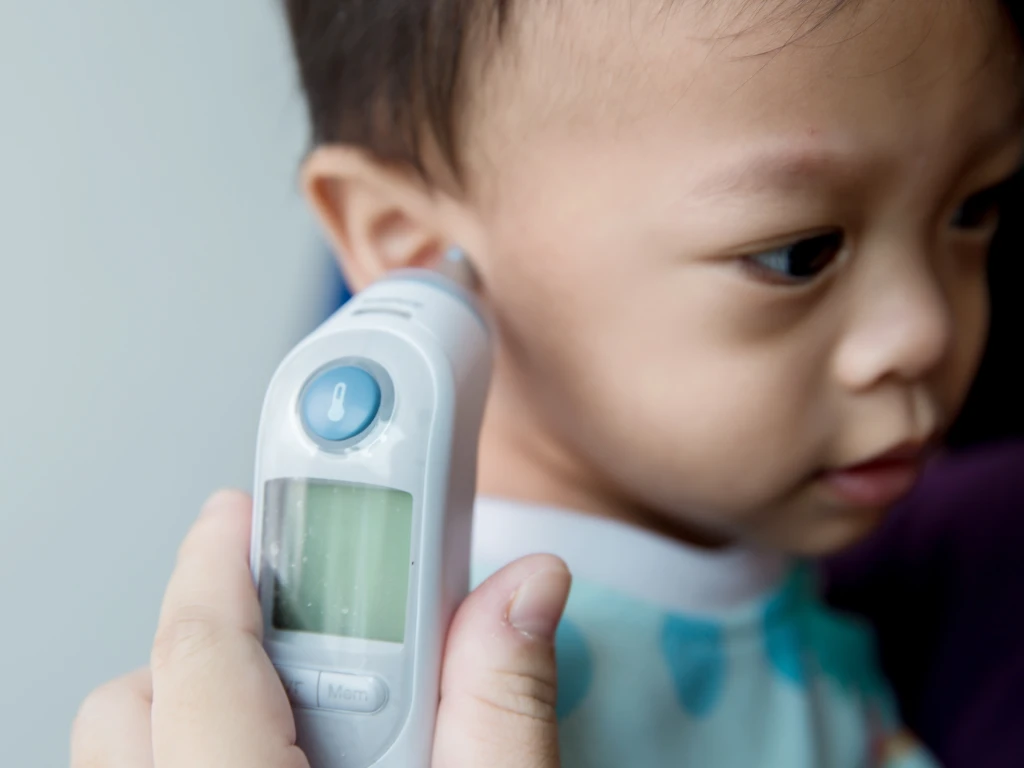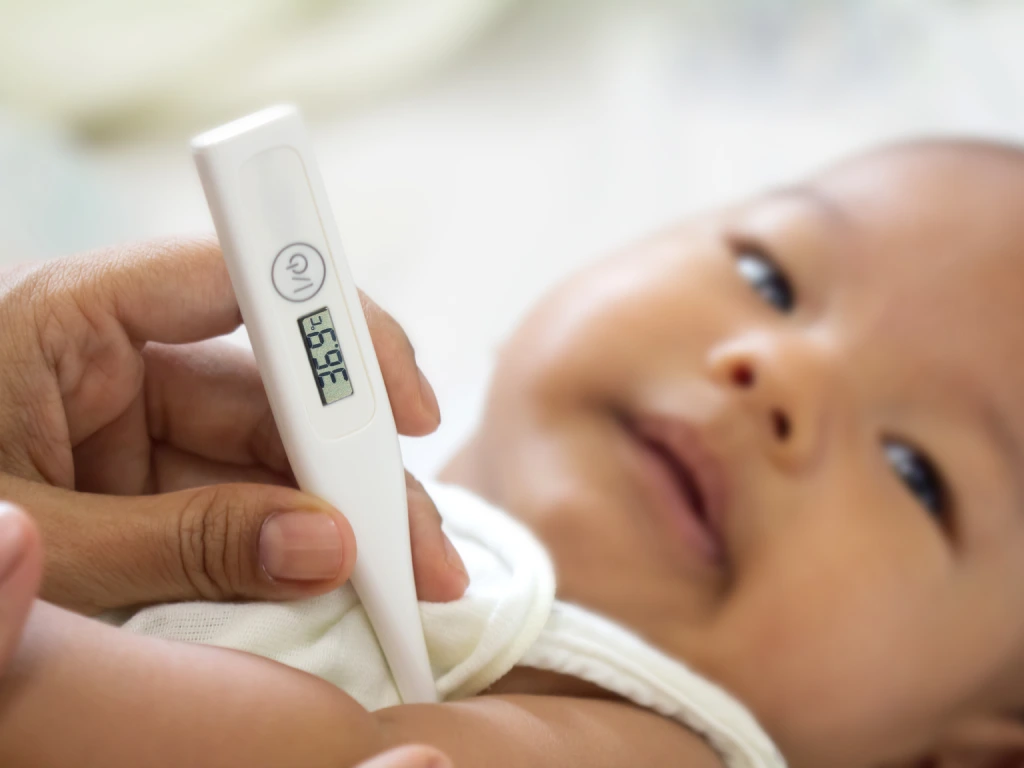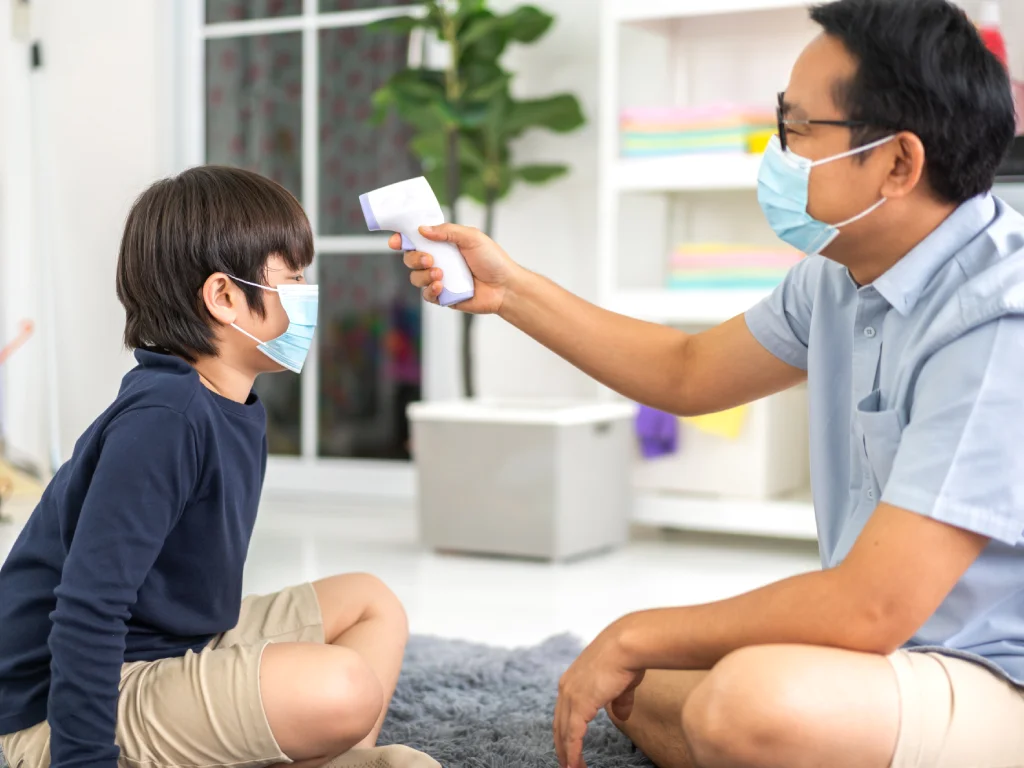
Fever is a common symptom that most parents will face at some point in their child’s life. It signals the body’s response to something happening within, most frequently, an infection, and in many cases, it resolves on its own without much concern.
However, as a parent, it’s natural to worry when your child has a fever. How high is too high? If you’re unsure, this guide is here to help. Learn more about fever, when it’s something more and what to do if your child has one.
A fever is when a child’s body temperature rises above the normal range. While the normal body temperature of each person varies, a temperature above 37.5°C (taken from the axilla or from the ear) or 38°C (taken rectally) is considered a fever. It is a common symptom of many illnesses, such as viral infections (like the flu or cold), bacterial infections, or even teething in infants.
Fever can be uncomfortable, but it is important to remember that it is just a symptom. It is more important to focus on the cause of the fever, rather than how high the fever is.



Fever in children can result from many different factors. The most common causes include:
Inflammatory conditions can also cause fever, but these are less common.
While a fever itself is not usually dangerous, it’s important to know when to seek medical help. Here are some guidelines:

Here are some helpful tips to make your little one feel more comfortable when they have a fever at home:
Fever is common in children, and we hope this guide helps you better understand how to manage and care for your child through different stages and situations. Please note that this guide is for informational purposes only and should not replace professional medical advice. If you ever feel uncertain or concerned about your child’s health, don’t hesitate to consult our doctors at SBCC Baby and Child Clinic for personalised guidance. Your child’s well-being is the most important priority, and seeking medical advice early ensures the best care.
Tele-consultation (within Singapore)
|
10 minute Consultation |
General Paediatrics Case |
Sub Specialty Case |
|
1st Consult |
$90 |
$120 |
|
Follow up |
$50 |
$80 |
Additional charges may apply for extended consultation with the doctor.
Delivery of Medication (within Singapore):
Orchard Road – $2, Tuas – $4, Sentosa and Airport – $10
*Tele-consultation (outside of Singapore) is only applicable for Sub Specialty Follow up.
In the current COVID-19 situation, parents may be hesitant to bring their little one to clinics. With this tele-consultation service, you may consult a paediatrician on non-urgent clinical matters without leaving your home.
FOLLOW-UP for stable chronic conditions such as asthma, allergic rhinitis, food allergy, eczema, constipation, juvenile arthritis, chronic urticaria
If your child is experiencing a medical emergency, please call an ambulance at 995 or make your way to the nearest Accident & Emergency department immediately. If it is not an emergency, but you/your child do not meet the requirement for telemedicine please call our clinics for an appointment. If you need mental health support, please call SOS Hotline (1800-221 4444).
1. Fill in the online registration form and make an appointment with your preferred paediatrician.
2. Complete the payment details before submitting the online registration form.
3. You will receive an SMS and Email to confirm your registration.
4. As the tele-consult request needs to be approved by the paediatrician, you will receive an SMS and Email confirming your request.
5. You will receive a video consultation link by SMS and Email when your appointment is near.
6. Click the link to start your consultation.
7. Once complete, you will receive a link by SMS and Email on the amount payable to the clinic.
8. If you have selected delivery of medication, a delivery fee will apply to your final bill amount.
A standard delivery fee of $15.00 will be charged for medication delivery within Singapore. You will receive your medication within 3 hours.
Please note the following surcharges apply to the following area:
Your medication will be delivered to your address via a courier.
At the time of registration, we charge an amount of $1 to authenticate your credit card. However, please note that this amount is immediately reversed once your request is submitted successfully.
Payment is made via your submitted credit card details at the time of registration.
| Doctor Name | Doctor Specialty (Special Interest) |
| Dr Alison Joanne Lee | Paediatric Medicine (Allergy & Immunology) |
| Dr Chan Kit Yee | Paediatric Medicine (Cardiology) |
| Dr Charmaine Teo | Paediatric Medicine |
| Dr Jenny Tang | Paediatric Medicine (Asthma, Lung, Sleep & Allergy) |
| Dr Martha Liu | Paediatric Medicine |
| Dr Nancy Tan | Paediatric Medicine (Gastroenterology, Hepatology & Nutrition) |
| Dr Natalie Epton | Paediatric Medicine (Neonatology) |
| Dr Ratna Sridjaja | Paediatric Medicine |
| Dr Wong Chin Khoon | Paediatric Medicine |
| Dr Ng Ying Woo | Obstetrics & Gynaecology* |
Thank you for choosing SBCC's Tele-Consultation service. At SBCC, we strive to provide you with a seamless and effective healthcare experience. Our Tele-consultation service is different than other providers as we can schedule a tele-consult with your preferred paediatrician through our Platform.
Please go through the below terms and conditions for our Tele-Consultation process including your rights and responsibilities of this platform. These Terms and conditions, together with our privacy policy constitute an agreement between you and Healthway Medical group.